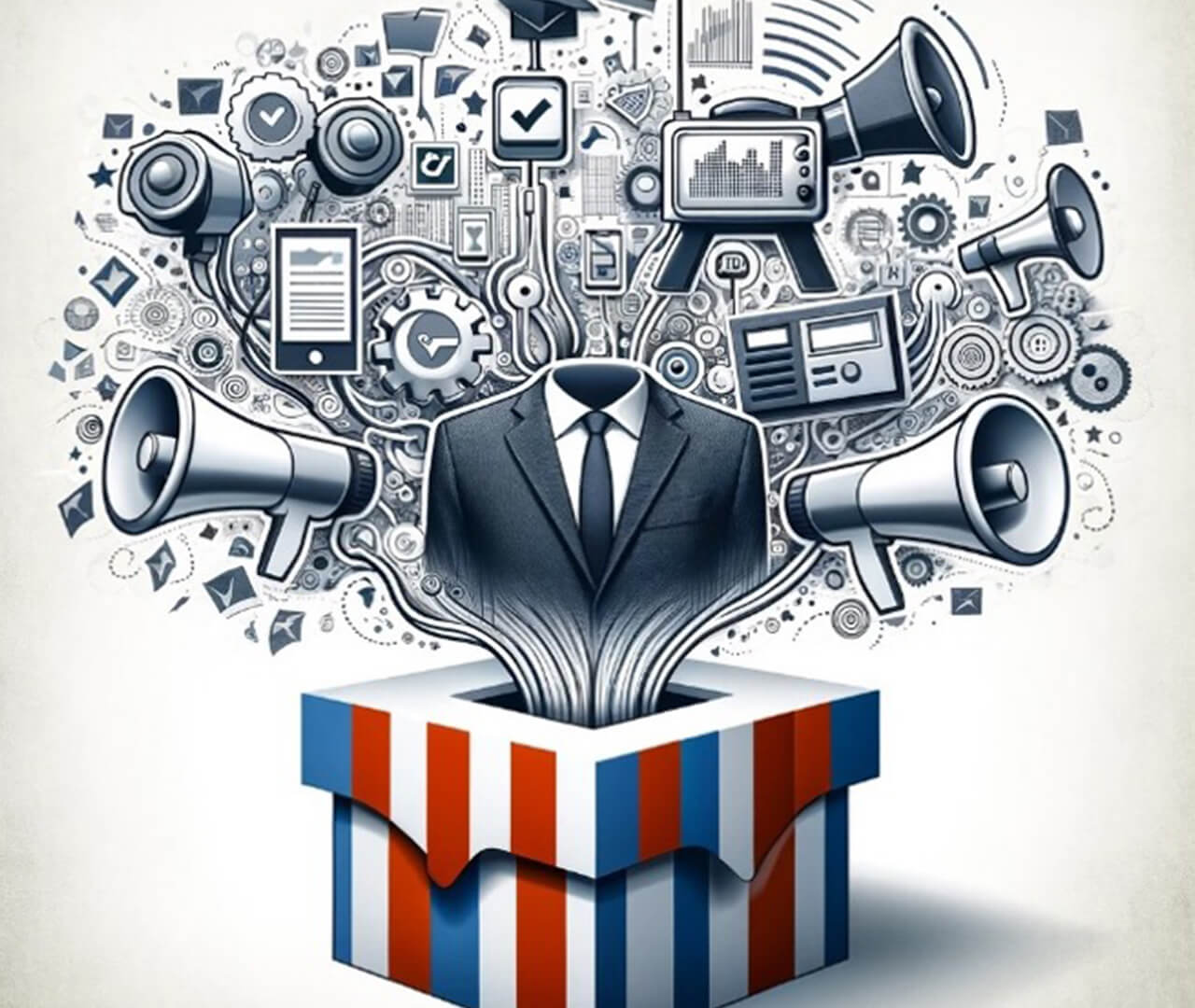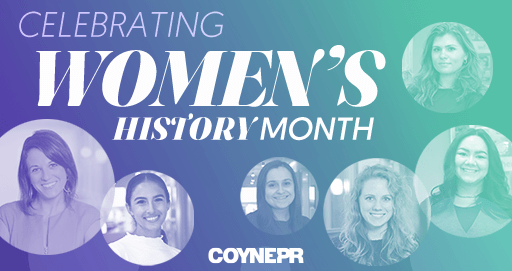Ah, the election year – that magical time when the public relations industry turns into a high-stakes poker game, and the media landscape resembles a crowded New York subway at rush hour. Ready or not, PR agencies buckle up for a roller coaster ride through the wacky world of election season! The elections are now less than a year off, and as always, our industry should be prepared for a tumultuous yet opportunistic ride. The ripple effects of the elections will be felt far and wide, especially in the way agencies manage their client portfolios and navigate the increasingly cluttered media landscape.
Securing prime coverage for clients? Good luck with that! It’s like trying to get a word in edgewise at a family dinner where politics is the main course. Every PR professional needs to be like Houdini, magically pulling visibility for their clients out of a hat already overstuffed with election coverage. The political fervor will undoubtedly dominate the news cycle, rendering it a herculean task for agencies to secure earned media for their clients. The press’s laser focus on every electoral nuance will overshadow other narratives, hence pushing PR professionals to think outside the conventional media box to ensure their client’s visibility.
But let’s not forget dear readers; this isn’t just about tossing haphazard coverage into the void. Oh no. It’s about crafting a narrative so compelling it would make Shakespeare jealous. During an election cycle, the socio-political narrative takes center stage, and the role of a public relations agency becomes pivotal in safeguarding and promoting a client’s brand ethos. The PR landscape is no longer just about addressing a target demographic; it’s about weaving a narrative that resonates with the larger electoral discourse. The acumen of a seasoned PR agency lies in its ability to craft compelling narratives that not only uphold the client’s values and identity but also echo the political zeitgeist. This is a delicate art, balancing brand messaging with the prevailing socio-political narrative without compromising on either.
For instance, a brand committed to environmental sustainability could have its PR campaign dovetail with larger societal conversations around climate change and governmental policies related to environmental conservation. This alignment not only amplifies the brand’s message but also establishes a deeper connection with audiences who are engaged in these larger issues.
However, elections are also a time of heightened scrutiny, and any missteps by candidates, companies or brands can blow up into major scandals. For instance, during the 2012 U.S. presidential election, Mitt Romney’s “47 percent” remarks created a PR crisis that required intensive management. Corporations also need to re-strategize their communication to align with or respond to the current political climate. For example, during the 2016 U.S. election, many corporations had to navigate the discussion around economic policies, trade agreements, and job creation.
This makes the election period not just a test of a brand’s resilience, but an opportunity for PR agencies to demonstrate their strategic foresight. By tuning into the political climate, crafting narratives that resonate on a larger scale, and upholding the brand’s principles, PR agencies can significantly amplify a brand’s presence and credibility in the public sphere. If done tactfully, PR agencies can align a client’s message with prevailing political attitudes to help them navigate choppy waters and remain in a positive light. This can act as a buffer in times of political turbulence to protect a brand from potential public backlash. In this sense, a well-crafted PR campaign can be the lifeboat that keeps a brand afloat. But it’s like playing a game of Twister with your client’s reputation at stake.
During election season, PR agencies also play a critical role in issue advocacy with NGO’s, corporations and non-profits vying for attention to ensure their agendas and messages don’t get lost in the electoral noise. At a time of enhanced community engagement, PR agencies help organizations foster dialogues and build relationships with their stakeholders. The rise of social media has led to a proliferation of digital PR campaigns. Barack Obama may have been the first candidate to successfully harness the power of social media when he set a precedent for digital campaigning and created a booming market for digital PR services during the 2008 elections. As political candidates, parties, and issue-based campaigns seek to shape public opinion, it leads to a surge in demand for PR services.
Additionally, the skyrocketing costs of paid media during the election season is actually a blessing in disguise for the PR industry. As advertising budgets balloon, clients pivot towards more cost-effective PR strategies to maintain their market presence. As advertising becomes prohibitively expensive, clients will seek out PR agencies for more budget-friendly ways to maintain or enhance their visibility. This creates an opportunity for PR professionals to showcase the value of earned media. This shift underscores a potential upturn for agencies that offer holistic and innovative solutions that transcend traditional advertising. PR agencies would do well by developing more innovative strategies that integrate traditional PR with digital and social media outreach. This holistic approach leverages various communication channels to build brand reputation, engage with stakeholders, and influence public opinion, often at a lower cost than traditional advertising.
Large corporations, aware of the high cost of advertising during peak political periods, will often shift their focus to PR-driven corporate social responsibility (CSR) initiatives. It’s like killing two birds with one stone – promoting the brand while wearing a halo of social responsibility. For example, a company could launch a community development project and use PR to gain media attention, thereby promoting its brand in a socially responsible manner. Small and medium-sized enterprises can find advertising costs completely prohibitive and choose to focus on getting featured in industry publications, tech blogs, and influencers’ social media posts. Or a non-profit might ramp up its PR efforts through public demonstrations, partnerships with influencers, and media coverage of their activities, to gain visibility without the hefty price tag of paid ads. In smaller political campaigns, PR tactics such as grassroots campaigns, community engagement, local media appearances, and social media outreach have proven effective.
The election season is a double-edged sword for the PR industry. While the challenges are manifold, the opportunities for creative, impactful PR are boundless. The ability to discern the socio-political undercurrents, and accordingly tailor a brand’s narrative, showcases the indispensable value and strategic depth a proficient PR agency brings to the table. Agencies that can adeptly maneuver the electoral turbulence, aligning their strategies with the shifting media focus will emerge as indispensable allies to their clients. So, to all the PR warriors out there, sharpen your pens and ready your strategies. The game is on!




